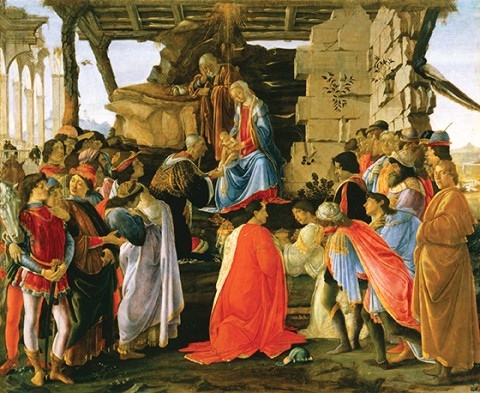Adoration of the Magi, by Sandro Botticelli

Sandro Botticelli, Adoration of the Magi, oil on panel, 1475–1476. PHOTO © SCALA / ART RESOURCE, NY.
The adoration of the Magi was one of the most popular subjects in 15th-century Florence because of the active membership of the Company of the Magi, a lay confraternity whose responsibilities included planning the Feast of the Magi. The Feast was observed on Epiphany (January 6) and celebrated the story of the arrival of the gentile wise men who traveled to pay homage to the Christ Child (Matt. 2). Sandro Botticelli (1445-1510) painted the subject at least seven times. The Medici family were members of the Company and were frequently painted as the three Magi. In this version (c. 1475), Cosimo de’ Medici is the oldest Magus, who kneels before Christ. He is covering the child’s feet with a veil to echo the actions of a priest during the benediction of the sacrament. Cosimo’s sons, Giovanni (d. 1463) and Piero the Gouty (d. 1469), are the other two, and the figure to the far left may be a fourth Medici, Lorenzo il Magnifico. The presence of the Medici in the figures of the Magi contained not only a religious message but also a political one. The Medici saw themselves as benevolent leaders and wanted to ally themselves with Florence and its rituals.





